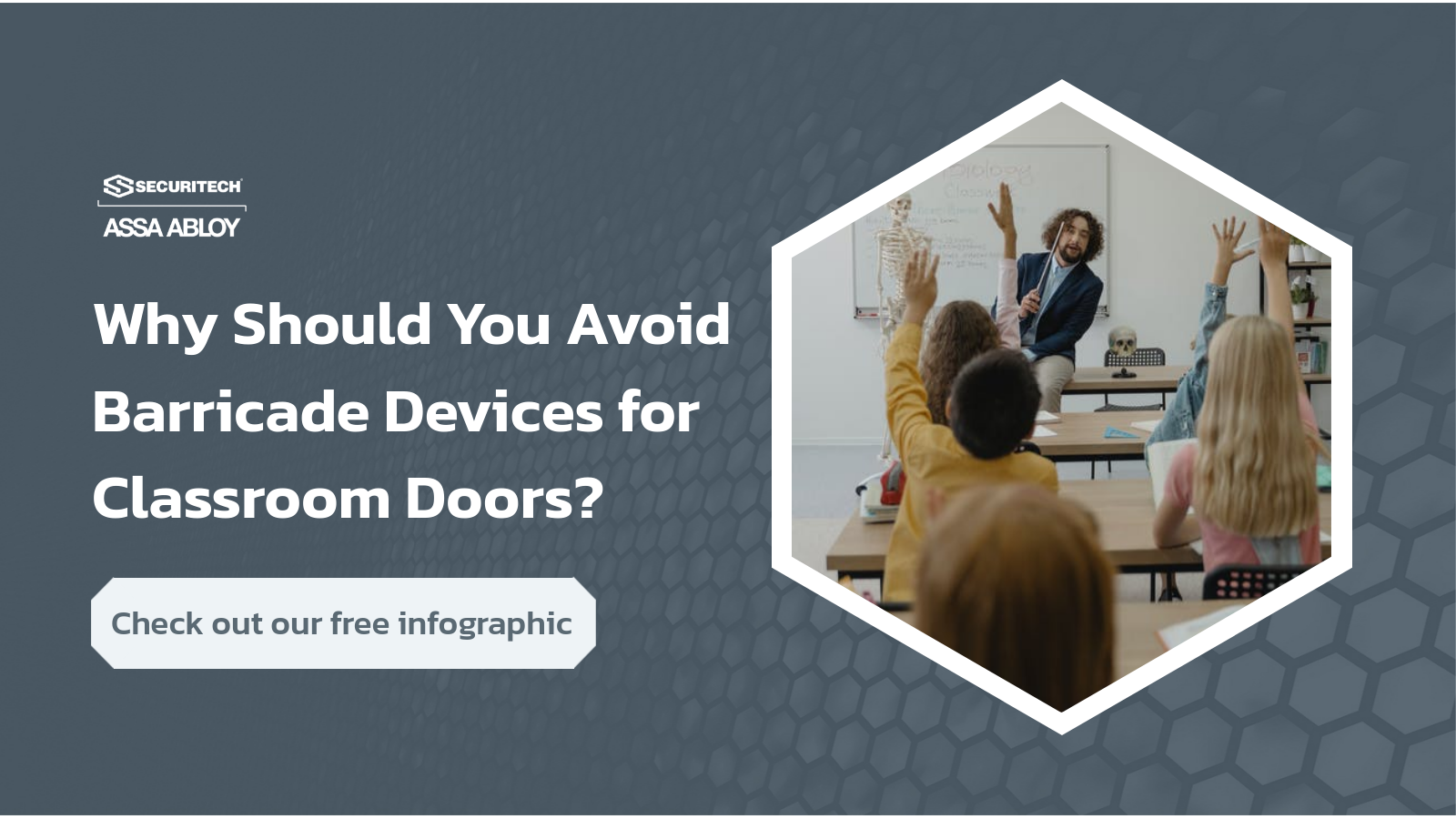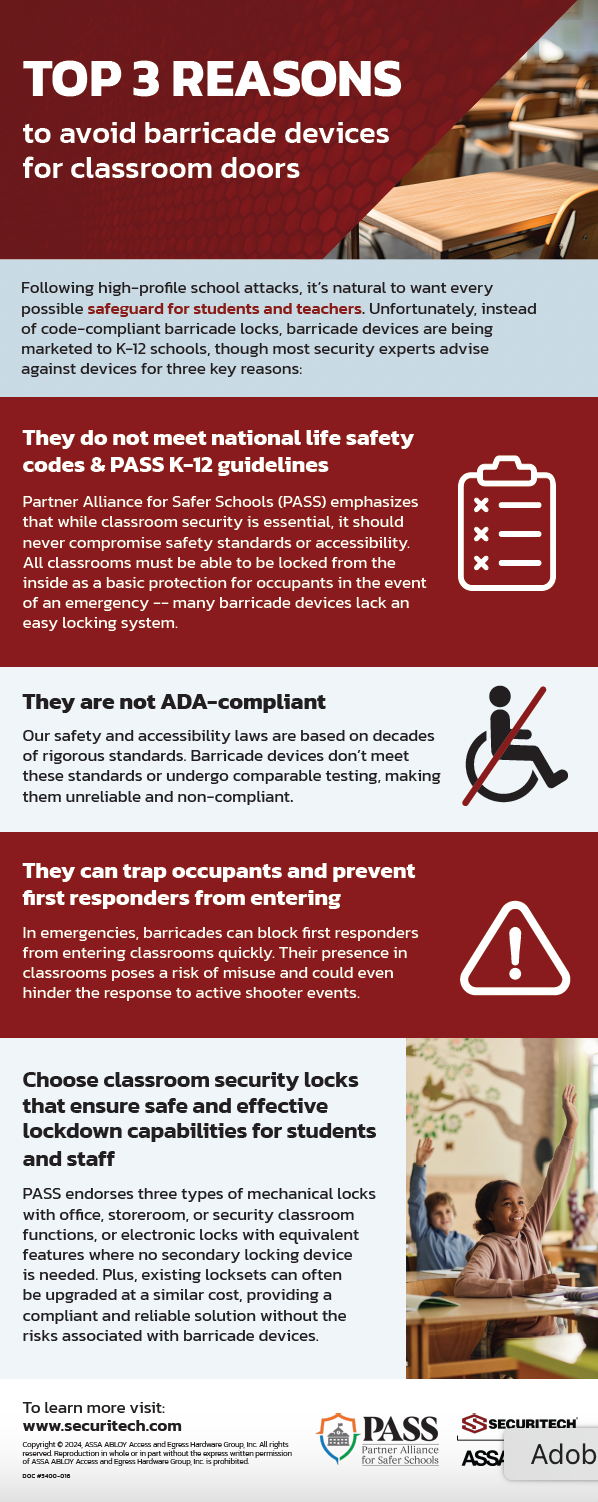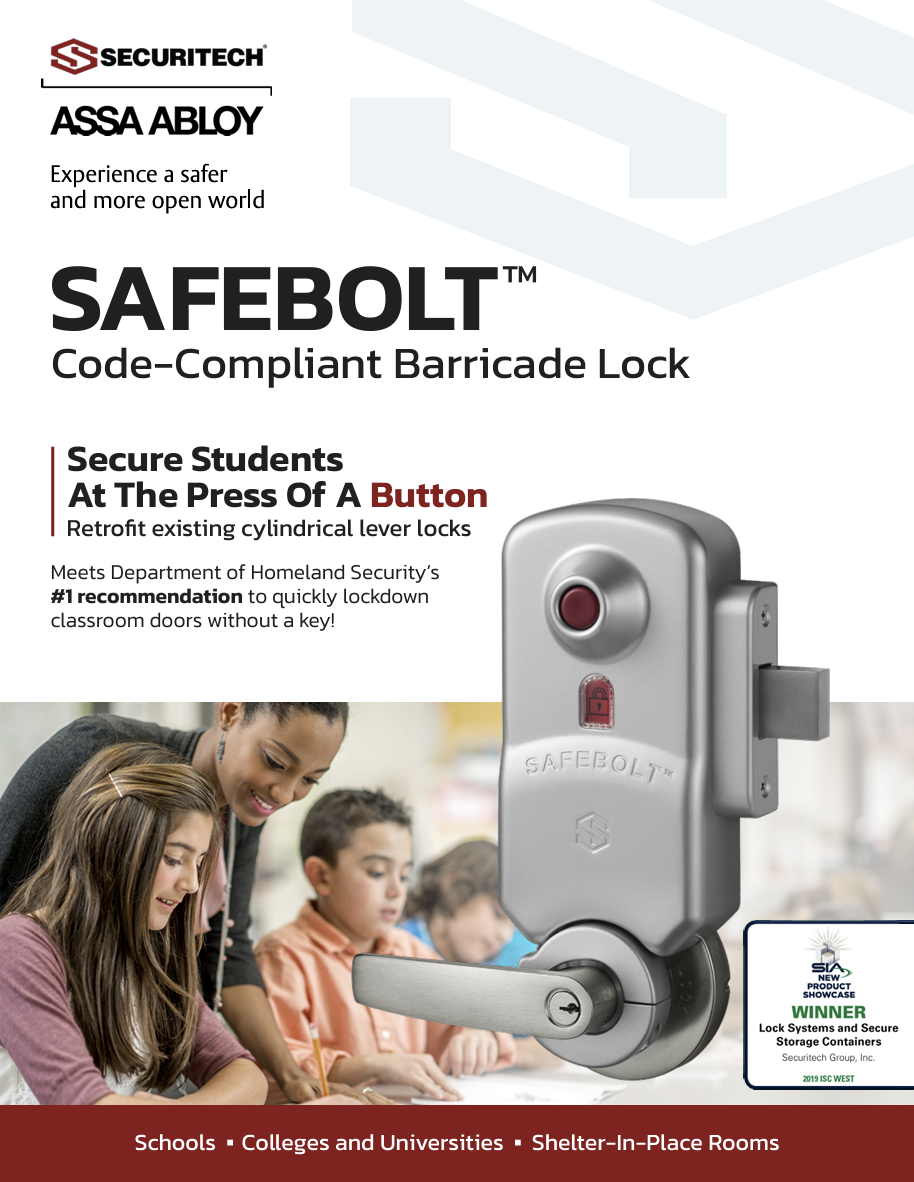Why Should You Avoid Barricade Devices for Classroom Doors?
Unfortunately, barricade devices are being marketed to K-12 schools as an easy aftermarket solution for classroom security, even though most security experts advise against these devices for three key reasons.

Following high-profile attacks and threats to school safety, it’s natural to want every possible safeguard for students and staff. When seeking out solutions for securing a classroom door, it can be difficult to wade through the myriad of options that promise to provide safety for schools.
Fortunately, organizations like the Partner Alliance for Safer Schools (PASS) have put together comprehensive guidelines to help school systems and security providers select the most appropriate hardware solutions for each classroom door and their unique needs.
Unfortunately, barricade devices are being marketed to K-12 schools as an easy aftermarket solution for classroom security, even though most security experts advise against these devices for three key reasons.
If you are having trouble viewing the infographic below, click here for a high-res version.

Top 3 reasons to avoid barricade devices for classroom doors
Barricade devices do not meet national life safety codes and PASS K-12 guidelines.
PASS emphasizes that while classroom security is essential, it should never compromise safety standards or accessibility. All classrooms must be able to be locked from the inside as a basic protection for occupants in the event of an emergency – many barricade devices lack an easy locking system.
Barricade devices are not ADA-compliant
Our safety and accessibility laws are based on decades of rigorous standards. Barricade devices don’t meet these standards or undergo comparable testing, making them unreliable and non-compliant.
Barricade devices can trap occupants and prevent first responders from entering
In emergencies, barricades can block first responders from entering classrooms quickly. Their presence in classrooms pose a risk of misuse and could even hinder the response to active shooter events.
Choose classroom security locks that ensure safe and effective lockdown capabilities for students and staff
Instead of barricade devices, PASS endorses three types of mechanical locksets: those with office, storeroom, or security classroom functions, or electronic locks that have equivalent features where no secondary locking device is needed.
Additionally, according to PASS, appropriate K-12 classroom locks should minimally be able to be locked from inside the classroom, provide keyed or electronic access from the corridor or hallway side by authorized personnel, provide free single motion egress from inside the room, and have a visual indicator that notes whether the classroom is locked or unlocked.
Ideally, those locks would also be easy to retrofit over existing hardware to minimize additional costs for schools, as well as empower any classroom occupant – staff, teacher, or student – to instantly lock down the classroom from the inside.
Looking for code-compliant classroom security solutions? Look no further than our instant lockdown classroom locks.
Click here to learn more about the award-winning solution that meets the Department of Homeland Security's #1 recommendation to lock down classroom doors without a key.

Existing locksets can often be upgraded at a similar cost to barricade devices, providing a code-compliant and reliable solution without the risks associated with barricade device.
Interested in learning more about how to protect classroom occupants with code-compliant door hardware in the event of an emergency? Contact our team of experts today to get started.